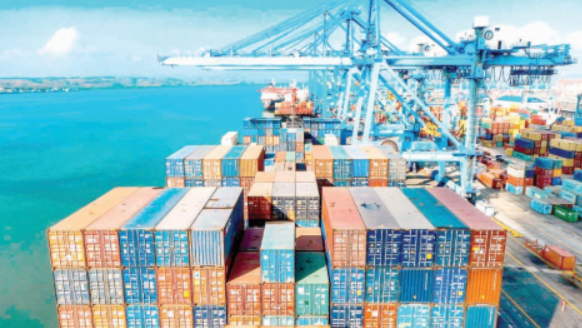Despite some modest improvements in Kenya’s trade and current account deficits, the country faced significant financial challenges in 2023, as detailed in the latest Economic Survey by the Kenya National Bureau of Statistics (KNBS).
According to the 2024 report, Kenya’s Net International Investment Position (IIP) — an indicator of the country’s financial standing in terms of global assets and liabilities — saw a substantial deterioration. Kenya’s debt to foreign entities surged by 22.7%, from Sh7,448.3 billion to Sh9,139.9 billion over the year.
This increase in debt was marked by a 34.2% rise in external assets, which reached Sh3,980.7 billion, and a more significant 26.5% hike in external liabilities, amounting to Sh13,174.6 billion by the end of 2023.
While the growth in assets suggests potential economic expansion, the surge in liabilities signals a heavier financial burden for the nation. Additionally, net financial inflows dropped by 21.2%, falling to Sh384.7 billion from Sh488.4 billion the previous year.
This decline, coupled with rising liabilities, worsened Kenya’s net IIP, placing the country in a borrowing position of Sh9,139.9 billion at the close of 2023.
On a brighter note, Kenya’s international trade value increased by 7.6% to Sh3.6 trillion. This growth was driven by high global prices of imported commodities, particularly petroleum products, and the depreciation of the Kenyan shilling against major trading currencies, which made imports more expensive.
In response to the financial strain from rising fuel costs and the escalating cost of living, the government reintroduced a fuel subsidy to stabilize retail fuel prices temporarily. The Energy and Petroleum Regulatory Authority (Epra) also implemented subsidies on kerosene, diesel, and petrol to prevent a spike in pump prices.
To combat the shilling’s depreciation and inflationary pressures, the Central Bank of Kenya’s Monetary Policy Committee (MPC) raised the Central Bank Rate (CBR) from 10.50% to 12.50 basis points. This move aimed to attract investors to the shilling and moderate its decline amidst global economic uncertainties and volatile oil prices.
The survey also highlighted a positive trend in export earnings, which rose by 15.4% to Sh1,007.9 billion. This increase helped slightly reduce the trade deficit from Sh1,617.6 billion in 2022 to Sh1,604.1 billion in 2023.
Furthermore, Kenya’s balance of payments, reflecting the nation’s economic transactions with the global market, showed marked improvement as the deficit narrowed to Sh134.8 billion from Sh251.5 billion the previous year.
This improvement was largely driven by a substantial decrease in the current account deficit, supported by a robust increase in export revenues that outpaced import costs.



